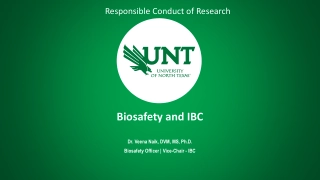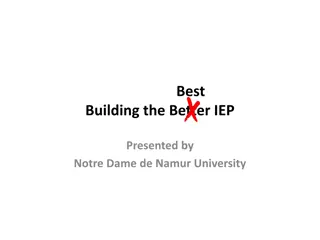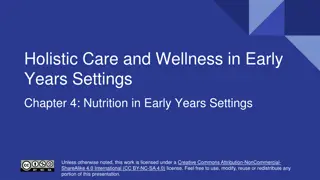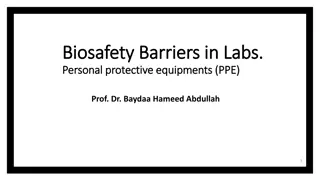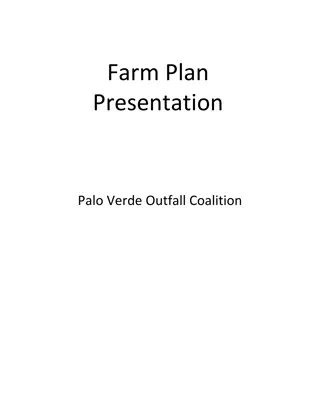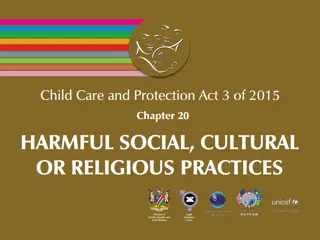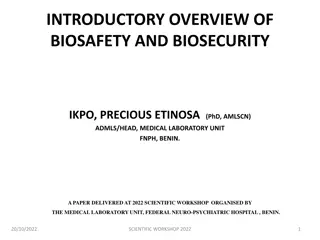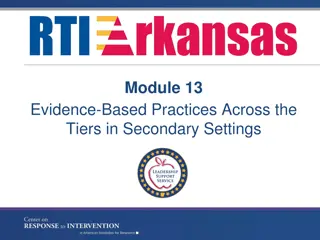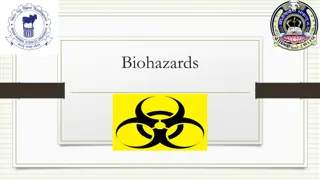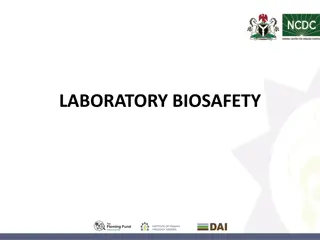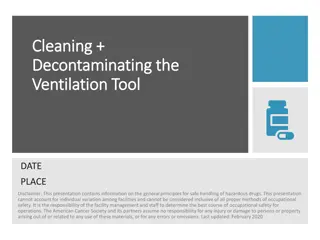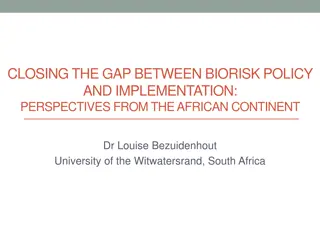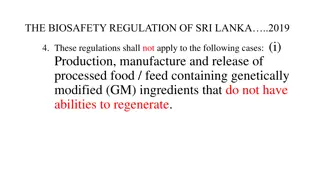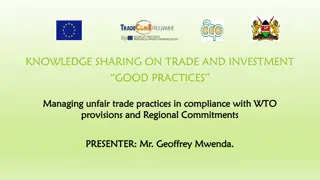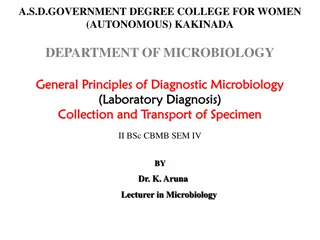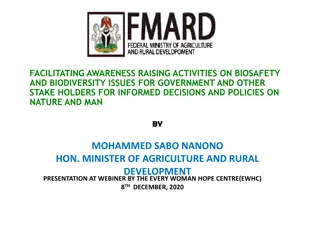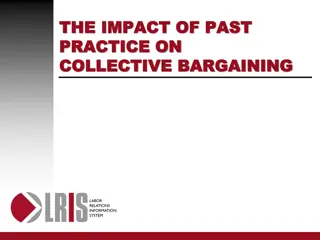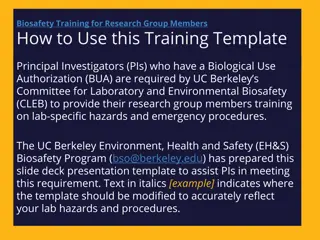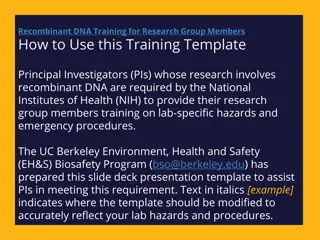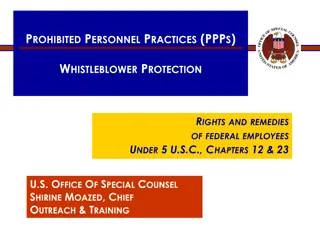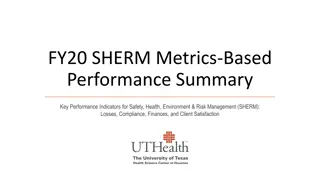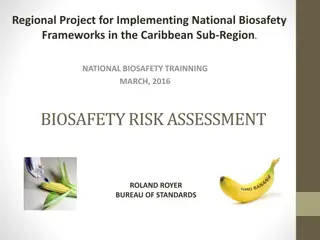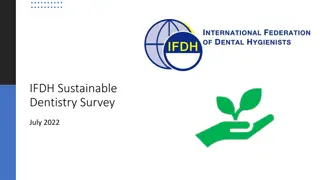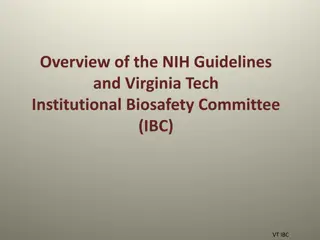Essential Food Safety Training Program in Abu Dhabi
The Essential Food Safety Training (EFST) program in Abu Dhabi is designed to equip food handlers with the knowledge and skills necessary to ensure safe food handling practices. Led by experienced trainers like Navas Khan A., the program covers essential pillars such as avoiding cross-contamination,
2 views • 26 slides
Biosafety and IBC - Understanding Research Conduct and Safety Measures
Explore the essential aspects of biosafety and the role of Institutional Biosafety Committees (IBC) in ensuring responsible research conduct. Learn about biohazards, biosecurity, laboratory-acquired infections, routes of exposure, and the structure and functions of the IBC. Enhance your understandin
1 views • 13 slides
Review of Grading Practices in PWCS and BRMS
This document outlines the assessment and grading practices in Prince William County Schools (PWCS) and Bull Run Middle School (BRMS) with a focus on providing feedback, enhancing student learning, and aligning assessments with learning outcomes. It includes information on assessment purposes, forma
3 views • 12 slides
Nutrition and Health Program Progress in Lao PDR
World Vision International is implementing a comprehensive nutrition and health program in multiple provinces of Lao PDR from 2020 to 2026. The program focuses on training healthcare staff, improving access to healthcare services, strengthening nutrition services, and promoting healthy practices for
2 views • 16 slides
Best Practices for Special Education Case Management Workshop
This workshop presented by Notre Dame de Namur University focuses on equipping learners with the best practices in special education case management. Participants will gain knowledge on SpEd case management, collaboration strategies, and creating legally defensible IEPs. The workshop covers topics s
7 views • 214 slides
Biological Registration Process and Administrative Controls for Safety Focus
Registering work involving biological materials, toxins, and recombinant DNA is essential for safety compliance. Principal Investigators must follow NIH guidelines and register with the Institutional Biosafety Committee. Contact NIH for additional instructions on working with toxins and Select Agent
4 views • 13 slides
Holistic Care and Wellness in Early Years Settings
Explore the essential nutritional principles and practices for infants, toddlers, preschoolers, and school-agers in early childhood settings. From prenatal nutrition to toddler feeding practices, learn about supporting healthy eating habits and fostering a nurturing mealtime environment. Understand
5 views • 14 slides
Ensuring Biosafety in Laboratory Settings: Barriers and Practices
Biosafety in laboratories involves implementing various barriers and practices to prevent the release of biological agents and protect lab workers. These include primary and secondary barriers, personal protective equipment (PPE), containment principles, and adherence to biosafety practices. Safety
1 views • 41 slides
Farm Plan Requirements and Best Practices Presentation for Palo Verde Outfall Coalition
Detailed information is provided in the Farm Plan Requirements and Best Practices Presentation for Palo Verde Outfall Coalition, covering essential details such as farm owner and grower information, farm location specifics, crop details, irrigation methods, chemical applications, management practice
0 views • 11 slides
Safeguarding Children: Legislation Against Harmful Practices
The Child Care and Protection Act of 2015, Chapter 20, addresses harmful social, cultural, and religious practices affecting children in Namibia. The Act prohibits practices detrimental to children's well-being, such as child marriage, and imposes penalties on those who subject children to such prac
0 views • 14 slides
Overview of Biosafety and Biosecurity in Global Health Security
The paper delivered at the 2022 Scientific Workshop highlights the importance of biosafety and biosecurity in the face of emerging infectious diseases. It defines key terms, emphasizes the need for containment procedures to manage biohazards, and addresses the critical pillars of biosafety and biose
0 views • 45 slides
Implementing Evidence-Based Practices in Secondary Settings
Explore the relationship between RTI, evidence-based practices, and high leverage practices in secondary education. Understand the importance of implementing EBPs and HLPs across prevention tiers. Discover the key objectives and considerations for applying these practices effectively.
0 views • 62 slides
Understanding Sustainable Fishing Practices and Conservation Efforts
Sustainable fishing practices are crucial for maintaining healthy marine ecosystems. The Marine Stewardship Council ensures fishing is sustainable by leaving enough fish in the ocean, protecting fish habitats, and supporting fishing communities. Unsustainable fishing practices such as bycatch, shark
2 views • 8 slides
Understanding Biosafety and Biosecurity Principles
Biosafety and Biosecurity are essential concepts in safeguarding against biological hazards. This article explores the definitions of hazard, threat, and risk, emphasizing the importance of managing risks associated with biological materials through biosafety and biosecurity measures. Learn about th
0 views • 26 slides
Understanding Biohazards: Levels, Safety Precautions, and Risk Groups
Biological hazards or biohazards pose risks to human health through organisms like bacteria, viruses, parasites, and fungi. Biosafety and biosecurity measures are crucial to prevent exposure, with different biosafety levels and risk group classifications guiding safety protocols in laboratory settin
2 views • 12 slides
Laboratory-Acquired Infections: Routes of Exposure and Prevention Measures
The content discusses laboratory-acquired infections from 1930 to 2015 and highlights exposure routes such as facial mucous membranes, percutaneous, ingestion, inhalation, and non-traditional routes like eye and nasal cavity. It emphasizes the importance of biosafety practices, identifies GI pathoge
0 views • 21 slides
Understanding Biosafety and Containment Measures in Laboratories
This content provides comprehensive information on biosafety, containment, biohazards, and the importance of preventing laboratory acquired infections. It covers the principles, practices, and procedures designed to safeguard against biological agents and toxins. The concept of biosecurity, containm
3 views • 17 slides
Safe Handling of Hazardous Drugs - Ventilation Tool Cleaning Procedures
This presentation outlines the proper procedures for cleaning, disinfecting, and organizing ventilation tools, emphasizing the importance of trained operators following written protocols. It covers waste handling, documentation, and the use of personal protective equipment (PPE) for occupational saf
0 views • 24 slides
Cutting-Edge Research Equipment and Studies at The Aga Khan University, Pakistan
The research facilities at The Aga Khan University in Pakistan boast state-of-the-art equipment for groundbreaking studies in areas like enteric fever prevention, rotavirus vaccine impact assessment, and dental stem cells. Researchers utilize specialized tools such as refrigerated centrifuges, biosa
0 views • 29 slides
Closing the Gap Between Biorisk Policy and Implementation in Africa
This presentation by Dr. Louise Bezuidenhout from the University of the Witwatersrand, South Africa, discusses the challenges and current developments in biosafety and biosecurity regulation in Africa. It outlines the research, funding, and policy landscape, focusing on the gap between policy formul
0 views • 14 slides
GMO Regulations in Sri Lanka: An Overview of Biosafety and Prohibitions
Sri Lanka's biosafety regulations of 2019 exempt certain cases involving genetically modified (GM) ingredients in processed foods. The regulations outline prohibitions on the import, sale, and distribution of GM organisms as food without approval. Additionally, the regulations address risks in proce
0 views • 12 slides
Housing Best Practices Forum: Enhancing Housing Options and Resource Collaboration
Explore the key agenda items, logistical details, forum format, goals, and best practices review from a recent Housing Best Practices Forum. The forum aims to amplify housing choices, improve resource utilization, foster collaboration among stakeholders for innovative housing solutions, share succes
0 views • 44 slides
Managing Unfair Trade Practices in Compliance with WTO
Unfair trade practices (UTP) encompass fraudulent, deceptive, or dishonest practices that are prohibited by law. The WTO provides remedies against UTP, allowing governments to address genuine harm to domestic industries. Kenya has taken steps to combat UTP by enacting the Trade Remedies Act and esta
3 views • 17 slides
Evolution of Accounting Practices in Social Housing Properties
Historic accounting practices for housing properties in the social housing sector underwent significant changes prior to and after the accounting period ending 1997/1998. Initially, all property assets were capitalized including major repair expenditure. However, a shift occurred leading to the remo
0 views • 44 slides
Collection and Transport of Specimens in Diagnostic Microbiology
Successful laboratory investigations depend on the proper collection and transport of specimens. This involves selecting adequate samples that represent the diseased area, avoiding contamination, obtaining specimens before administering antimicrobials, ensuring biosafety, proper documentation, and t
0 views • 20 slides
Insights from 2024 Survey on GP Practice Contacts
Detailed findings from the 2024 survey reveal that 67% had a good overall experience contacting GP practices, 74% accessed NHS services when practices were closed, and 56% used pharmacy services. Access to GP practices was rated at 50% easy on the phone, 48% easy on practice websites, and 45% easy v
0 views • 16 slides
Addressing Land Degradation Challenges in Agriculture for Sustainable Development
World agriculture has evolved over the decades, facing challenges like environmental degradation and land misuse. Awareness-raising activities on biosafety and biodiversity are crucial for informed decision-making in agriculture. Nigeria, with its diverse ecological zones, must sustainably manage na
0 views • 13 slides
Understanding the Impact of Past Practices on Collective Bargaining
Exploring the significance of past practices in interpreting, supplementing, and potentially contradicting contract language within the context of collective bargaining. Covering topics such as the definition of past practices, the duty to bargain, waivers of protest rights, and remedies for unlawfu
0 views • 35 slides
Biosafety Training Requirements for Research Group Members
Principal Investigators with a Biological Use Authorization at UC Berkeley must provide lab-specific biosafety training to research group members. This training template covers CLEB administrative requirements, risk assessment, good work practices, emergency procedures, and more. Compliance ensures
0 views • 17 slides
Guide to UCSB Biological Safety Program
This guide provides an overview of UCSB's Biological Safety Program, covering important aspects such as lab safety fundamentals, biological use authorization, biosafety officer's role, and the Institutional Biosafety Committee. It outlines key steps like hazard assessment, training, waste management
0 views • 24 slides
Recombinant DNA Training Overview for Research Group Members
This training template is designed to assist Principal Investigators in providing lab-specific biosafety training to research group members working with recombinant DNA. It covers essential topics such as NIH guidelines, administrative requirements, risk assessment, emergency procedures, and more. C
0 views • 22 slides
Improving DNS Security with KINDNS Best Practices
Best practices for improving DNS resilience and security are crucial for protecting billions of Internet users. Initiatives like KINDNS aim to establish global norms to enhance DNS security by codifying these practices. The KINDNS group focuses on practices for authoritative and recursive nameserver
0 views • 17 slides
Federal Employee Whistleblower Protection and Prohibited Personnel Practices Overview
Federal employees are protected against prohibited personnel practices through whistleblower rights and remedies under United States Code. The Office of Special Counsel investigates and seeks corrective actions for prohibited practices. Key concepts include merit system principles and the framework
0 views • 23 slides
SHERM's Impact and Response to COVID-19 at UTHealth
COVID-19 pandemic significantly influenced departmental operations at UTHealth, with services either increasing, maintaining, or deferring. SHERM staff, essential personnel working on-campus, adapted to high workloads and participated in furlough programs. Biosafety measures, travel restrictions, re
0 views • 46 slides
Understanding Risk Assessment for Biosafety in the Caribbean Sub-Region
Risk assessment is a structured approach to evaluating the potential harm from activities involving genetically modified organisms (GMOs) in order to protect health and the environment. It involves identifying, characterizing, and evaluating risks to determine the level of concern and the need for m
0 views • 16 slides
Understanding Sustainable Dentistry Practices: Global Survey Insights
A survey conducted in July 2022 by the International Federation of Dental Hygienists (IFDH) aimed to understand dental hygienists' practices and beliefs regarding sustainable dentistry. Insights from 295 respondents across 24 countries highlighted varying levels of familiarity with sustainable denti
0 views • 28 slides
Understanding NIH Guidelines and Virginia Tech's Institutional Biosafety Committee
The NIH Guidelines and Virginia Tech's Institutional Biosafety Committee play crucial roles in ensuring safety and compliance in research involving recombinant and synthetic nucleic acids. The guidelines outline biosafety practices and procedures, while the committee oversees the establishment of po
0 views • 24 slides
Understanding COMS and Recombinant DNA Regulations
The Committee on Microbiological Safety (COMS) was established in 1978 to address public concerns regarding safety, environment, and ethics of research involving hazardous biological agents. COMS oversees activities related to recombinant DNA and biological agents at Harvard, supporting all schools
0 views • 6 slides
Understanding Nipah Virus: A Comprehensive Overview
Nipah virus, belonging to the Paramyxoviridae family, is a zoonotic virus with high pathogenicity and mortality rates. It falls under the Henipavirus genus, known for infecting a wide range of animal species. Its virion structure consists of non-segmented, negative-sense RNA, and the viral genome co
0 views • 22 slides
Sustainable Agriculture: Feeding the World and Future Farming Practices
Explore the dynamics of farming from rural to urban settings, understanding factors like supply and demand, seasonal eating, and sustainable agriculture practices through the lens of economic, poverty, and population considerations. Discover how different farming practices meet market demands, how r
0 views • 55 slides

